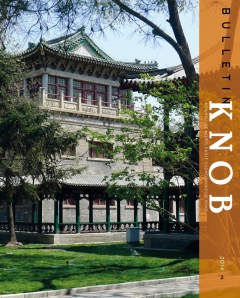Indexing ESCI / Scopus


Daan Lavies: Onbegrepen hoeken in de Nederlanden en overzee. De zoektocht naar het ideaal in de zestiende-eeuwse vestingbouw Thomas Coomans: Dom Adelbert Gresnigt. Agent van de roomse inculturatiepolitiek in China (1927–1932) Agnes Kersten: Blikvangers langs de weg. De architectuur van Nederlandse benzinestations tijdens de Wederopbouw
The notion of a ‘homogeneity of style’ in the historiography of military architecture carries the risk that those forms that are not directly traceable in modern historiography are too easily dismissed as out of bound or simply as the results of external factors.
This article is about fortifications that stand out because the walls between the bastions are not straight but concave. An essay by Renty and Philippeville about structures along the Habsburg-French border and the Portuguese overseas fortifications at Mazagão in Morocco and the São Sebastião fortress in Mozambique...
Dom Adelbert Gresnigt (1877-1956) was a Dutch Benedictine monk and artist from the Belgian abbey of Maredsous. Educated as a painter and a sculptor at the abbey art school of Beuron in Germany, he worked in Italy, Brazil, the United States, China, and the Vatican. This article focuses on the five years Gresnigt spent in China (March 1927-January 1932), with the papal mission to create a ‘Sino-Christian’ architectural style that would contribute to the new indigenization policy of the Holy See.
Based both on unexplored archives and fieldwork, this article reconstructs the...
When the automobile became popular at the beginning of the twentieth century, there was a growing need for petrol. Vying for the patronage of the motorists, oil companies went out of their way to distinguish themselves from the competition. Both the petrol cans and the petrol itself, in the early years, as well as the petrol stations of the 1930s, were in the signature color of the oil company in question to draw the attention of the motorists. The petrol station became a means of communicating with the motorists. Although from this perspective eye-catching petrol stations were quite...
